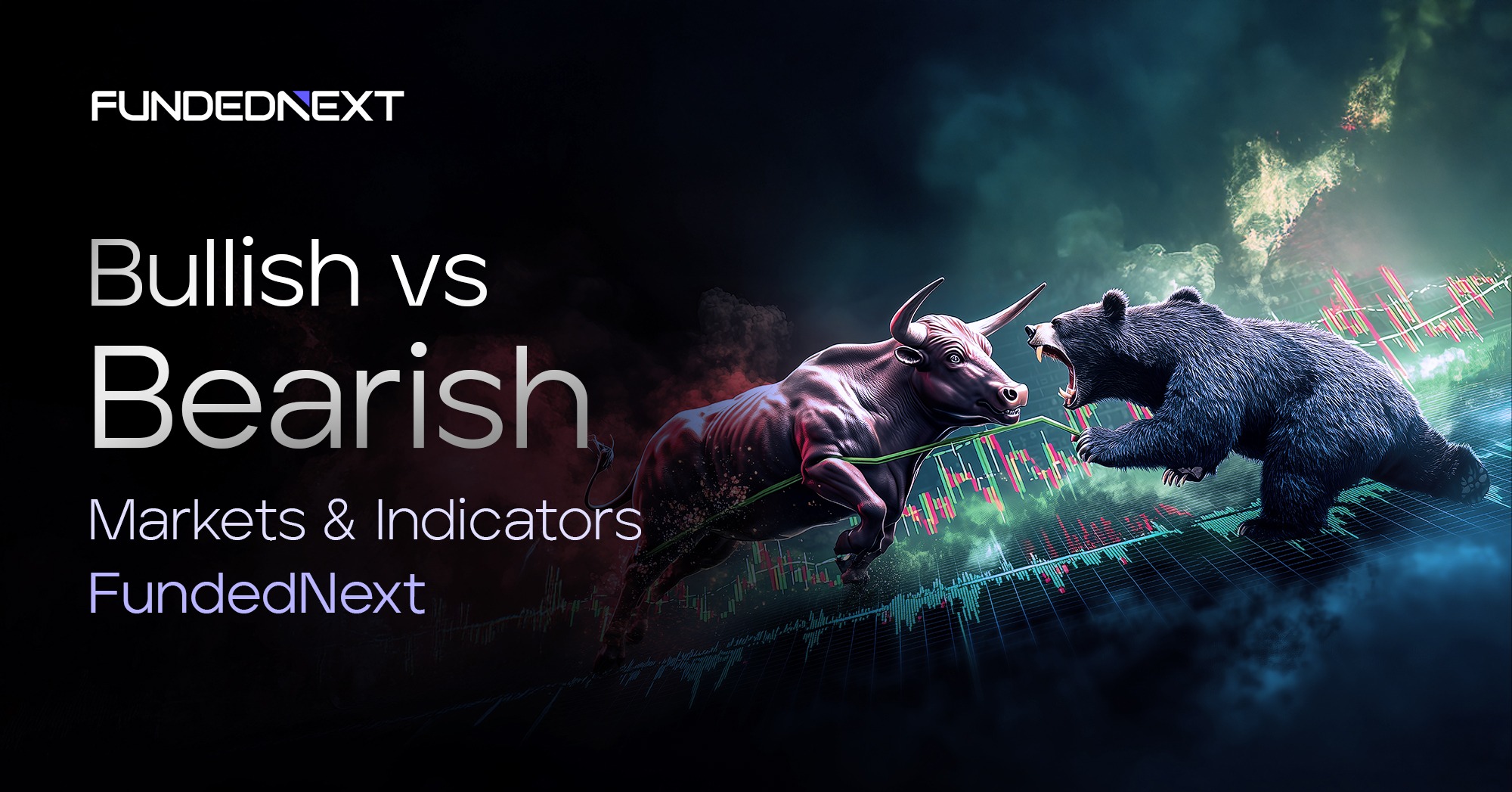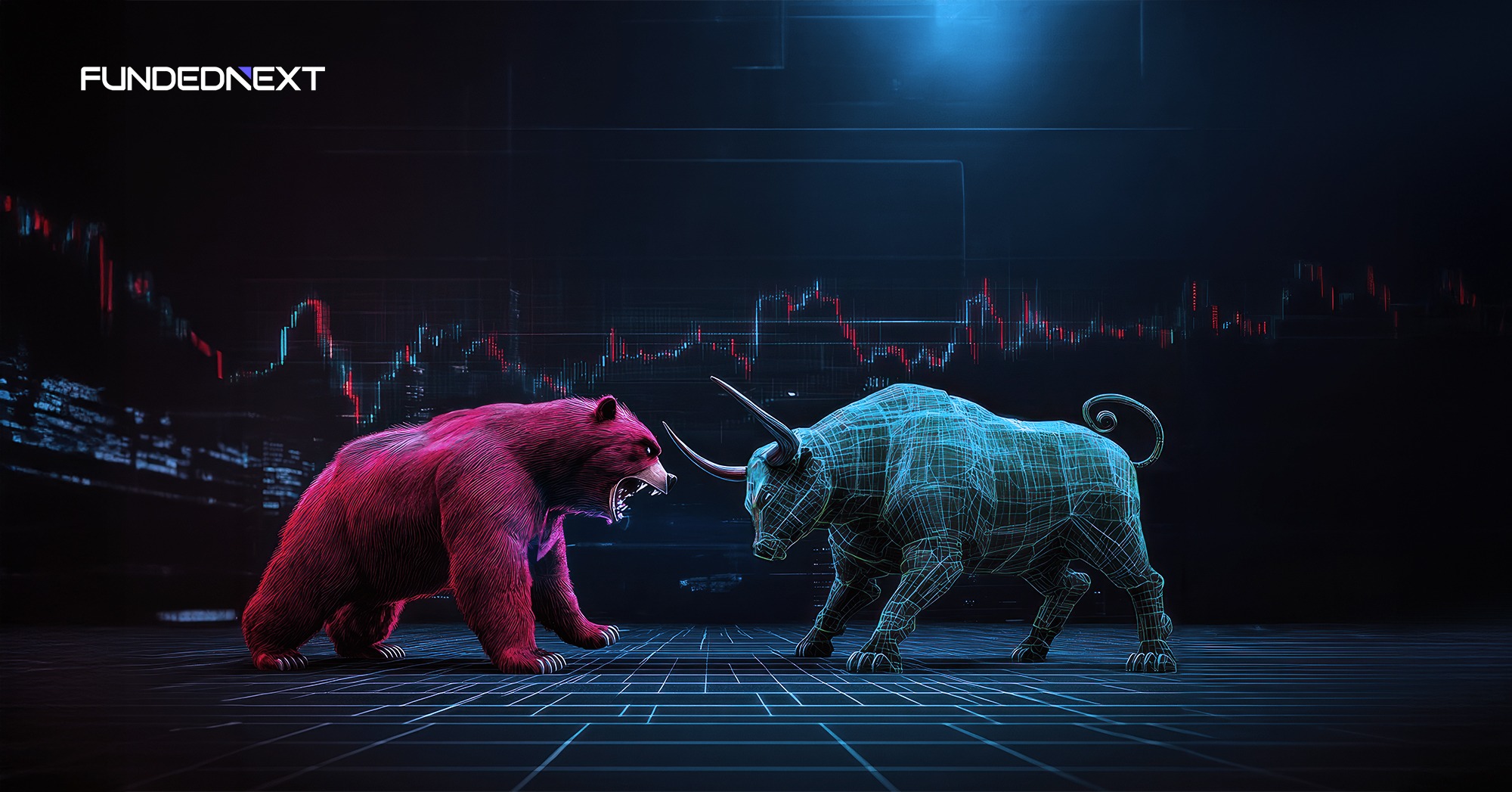
Table of Contents
Summary:
Bullish and bearish markets indicate overall rising or falling asset prices, respectively. Traders’ attitudes and strategies align with these trends, using specific indicators like candlestick patterns to predict movements.
Main Points:
- Bull Markets: Long-term rising asset prices, typically a 20% increase from recent lows.
- Bear Markets: Long-term falling asset prices, typically a 20% decrease from recent highs.
- Bullish Traders: Expect market rise, often taking long positions.
- Bearish Traders: Expect market decline, often using short-selling.
- Candlestick Patterns: Key indicators for identifying market trends and potential reversals.
- Trading Opportunities: Exist in both bullish and bearish markets.
The concepts of bull markets and bear markets, sometimes called bullish and bearish markets, are well-known by experienced traders and many newer ones as well. Even among people with no trading or investing experience, these two terms are often known if not entirely understood.
So, what does bullish vs bearish mean? How do these concepts, and the indicators associated with them, apply to trading assets like forex, commodities, and indices? Keep reading to learn more.
Basic and Vital Info: Bullish vs Bearish Meaning, Attitudes, & More
You can have bullish and bearish markets, as well as bullish and bearish traders. Let’s first look at bull and bear markets.
Bull Markets
A bull market refers to a trading market where prices are on the rise overall for a good length of time (many months or years), or are expected to rise. It’s often used to refer to the stock market but can apply to any market where assets are traded.
While not an official definition, the common view is that a bull market occurs when the average market value rises 20% or more in price. That’s as compared to recent low prices for those assets.
Kiplinger explains that bull markets often happen before traders and others in a market agree that such an event is taking place. There are many ways to define a bull market, and it takes time for a majority of traders to agree that one is happening.
As Investopedia explains, a bull market doesn’t mean that every single asset will rise in price. There will always be some assets that drop in price, even in the strongest bear market. However, the major trend in a bear market is rising prices across many assets.
Bear Markets
A bear market refers to the opposite of a bull market, at least in the big picture. In a bear market, the prices of many assets fall from a recent high. It’s a downward market trend. Just as with bull markets, bear markets can occur in any market where assets are traded.
While not an official definition, the average market value drops about 20% from a recent high in a bear market.
In bear markets, some assets will go up in price even though the overall market is dropping. The key is that the average market value decreases by a significant amount.
One difference between bull markets and bear markets is that bear markets don’t last as long as bull markets. Bear markets often last a few years. Bear markets are somewhat shorter, usually lasting several months.
Bullish vs Bearish Traders
It’s much easier to understand the idea of bearish vs bullish forex traders (as well as commodity, and all other types of traders) with these definitions of bull and bear markets.
A bullish trader, or a bullish attitude, means that a trader expects the market they work in will see an average rise in value. They’ll plan their overall strategy and make trades that reflect their belief that the overall market will rise in value, often taking long positions.
A bearish trader, or bearish attitude, means that a trader expects the market they work in will see a widespread price decline. Short-selling — borrowing an asset and then selling it immediately with the expectation it can be bought back at a lower price and then returned — is a common strategy for bearish traders.
It’s worth noting that traders can be bullish or bearish in the context of a specific asset. While these terms normally apply to entire markets, they can be used in reference to a specific forex currency pair, stock, index, or any other asset. The attitude is the same, but it doesn’t apply to the market as a whole.

Bullish vs Bearish Candles: A Key Indicator
Bullish and bearish markets often aren’t identified until well after they’ve begun. However, certain indicators can show the potential for a bullish or bearish market or a bullish or bearish position for a single asset.
Candlestick patterns show several individual candles on a graph. Each candle represents the opening, high, low, and closing prices for a given asset. The key parts of the candle are:
- The wick or shadow, which shows the high (top wick) and low (bottom wick) prices across the day of trading or other time period.
- The body, which shows the open and close prices for the asset.
- The color shows whether the opening or closing price was higher. Black or red shows a higher opening price and a lower closing price. White or green shows the opposite.
Candlestick patterns are arranged on a graph to describe asset price movement over time. They are just one type of technical analysis, but are popular because of the compact way they show several key pieces of information.
Candlestick patterns that may show a bearish market include:
- Evening star: This three-candle pattern includes a green (or white) first candle, a short middle candle (either green/white or red/black), and a red candle with a long lower shadow. This pattern shows a positive trend is reversing and a continued downtrend is possible.
- Hanging man: The hanging man pattern is a single candlestick with a short top wick or none at all, a short body, and a long lower wick. This pattern shows a significant price drop during the trading day due to lots of sales, which may indicate future price drops.
Candlestick patterns that may show a bullish market include:
- Hammer: The hammer is a single candlestick with a short body along with a noticeably long lower wick that appears after a price drop. This candlestick shows that buyers have started to outpace sellers and a price increase could be coming. Hammers can be green/white or red/black.
- Three white (or green) soldiers: This pattern includes three white/green candles, each of which opens within the previous candle’s body and closes above the previous candle’s high. It can show a reversal in a downward trading trend.
You Can Trade in Bullish and Bearish Markets
There are always opportunities for positive trades whether a market or individual asset is in a bullish or bearish state. FundedNext empowers you to do your best as a trader with exceptional trading conditions, top trading platforms, challenge-phase profit sharing, and much more.
Join the Stellar Challenge at FundedNext! Learn about the Stellar Step 1 and Step 2 to start trading in just 7 days. Sign up today!


